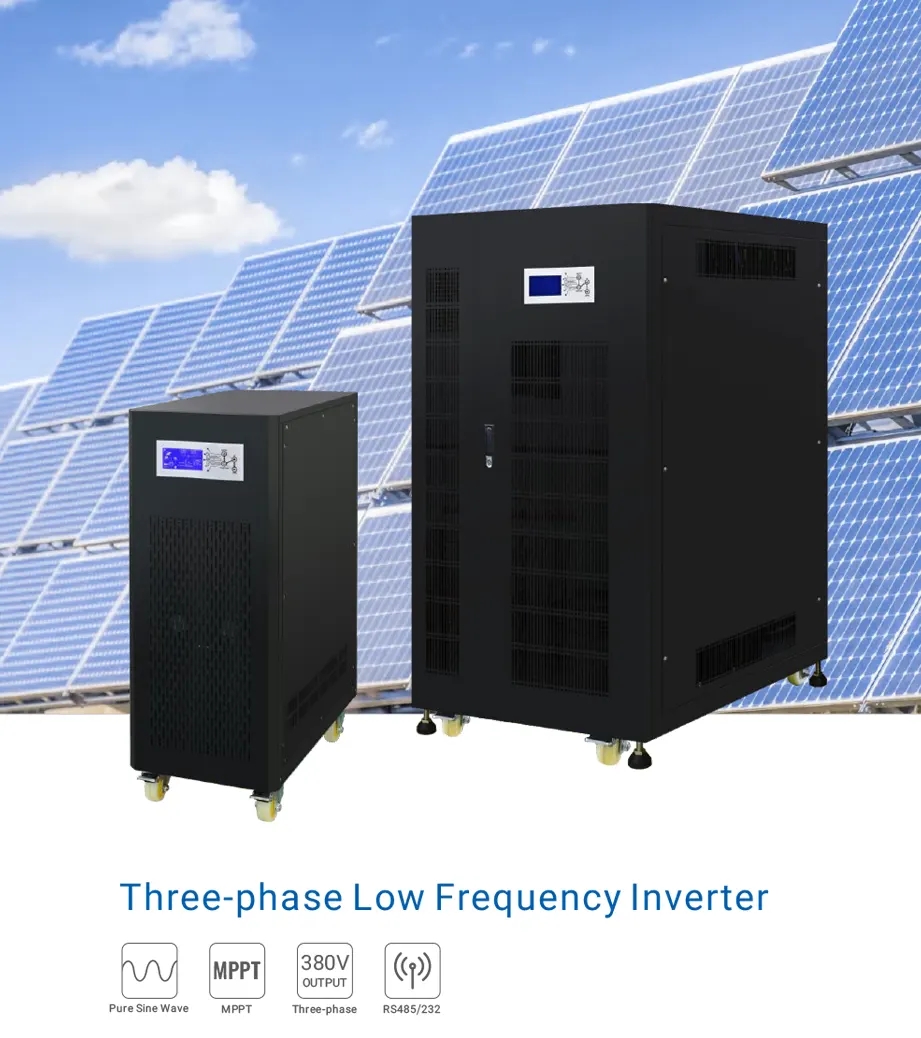 English
English Español
Español  Português
Português  русский
русский  Français
Français  日本語
日本語  Deutsch
Deutsch  tiếng Việt
tiếng Việt  Italiano
Italiano  Nederlands
Nederlands  ภาษาไทย
ภาษาไทย  Polski
Polski  한국어
한국어  Svenska
Svenska  magyar
magyar  Malay
Malay  বাংলা ভাষার
বাংলা ভাষার  Dansk
Dansk  Suomi
Suomi  हिन्दी
हिन्दी  Pilipino
Pilipino  Türkçe
Türkçe  Gaeilge
Gaeilge  العربية
العربية  Indonesia
Indonesia  Norsk
Norsk  تمل
تمل  český
český  ελληνικά
ελληνικά  український
український  Javanese
Javanese  فارسی
فارسی  தமிழ்
தமிழ்  తెలుగు
తెలుగు  नेपाली
नेपाली  Burmese
Burmese  български
български  ລາວ
ລາວ  Latine
Latine  Қазақша
Қазақша  Euskal
Euskal  Azərbaycan
Azərbaycan  Slovenský jazyk
Slovenský jazyk  Македонски
Македонски  Lietuvos
Lietuvos  Eesti Keel
Eesti Keel  Română
Română  Slovenski
Slovenski  मराठी
मराठी  Srpski језик
Srpski језик
Do you know what functions a photovoltaic inverter has?
2024-02-22
An inverter is an electronic device that converts direct current (DC) into alternating current (AC). Inverters are generally used in solar energy, wind energy, automotive electronics, home appliances, power equipment, communication power supplies and other fields.
Here are the functions an inverter typically needs to have:
Voltage conversion function: The inverter can convert DC power into AC power and appropriately transform the input voltage to meet different power application needs.
Frequency conversion function: The inverter can convert the input DC power into AC power with an adjustable output frequency to meet different power application needs.
DC filtering function: When the inverter converts the input DC power into AC power, it will generate many harmonic signals, which need to be filtered by the inverter to ensure that the output current has good electrical quality. The grid-connected inverter requires the output to be a sine wave, and the high-order harmonics and DC components are small enough to not cause slope pollution to the power grid.
Maximum power tracking function (MPPT): When used to connect solar panels and other renewable energy devices to the grid to generate electricity, the inverter can ensure the highest power generation efficiency through maximum power point tracking technology, thereby increasing the output power of the system. Maximizing efficiency regardless of changes in sunlight and temperature.
Intelligent protection functions: The inverter needs to have safety protection functions such as overload protection, short circuit protection, and over-temperature protection to ensure the safe operation of power equipment and increase the service life of the equipment. It is also called anti-arc conductor operation protection function. When the battery voltage falls below or exceeds a certain threshold, it automatically shuts down to prevent equipment damage and malfunction. This ensures that no power is injected into the grid in the event of power outages, malfunctions, etc., thereby improving grid security.
Among them, the grid-connected inverter has the functions of automatic grid connection and column solution. When the sun rises and the sunlight reaches the power generation output requirement, it is automatically put into power generation operation. When the sun sets and the output power is insufficient, it is automatically disconnected from the power grid.
Data collection and communication functions: Collect grid voltage, current, frequency and other data and communicate with the system to facilitate monitoring and management. Monitor and record equipment operating conditions in real time, and detect equipment failures and other problems in advance for timely processing.
Isolation function: Isolate the voltage and current of renewable energy devices such as solar panels or wind turbines to ensure the safety between the equipment and the power grid.
Battery life extension functionFor high-power load equipment such as electric vehicles, the inverter must have the characteristics of low energy consumption, high conversion efficiency, and fast response to extend the battery life of the load equipment.




